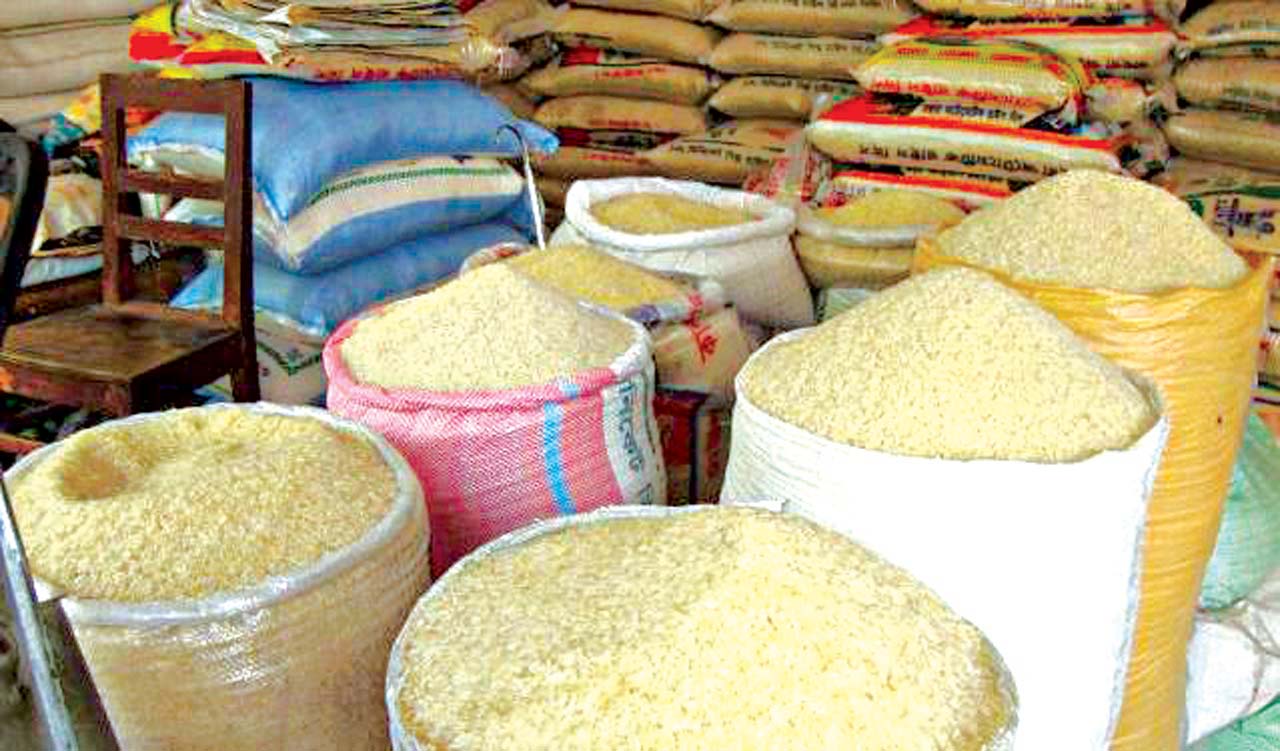Stakeholders in the rice value chain have identified insufficient paddy rice and poor irrigation that are hindering all-year-round farming as the major factors responsible for the high cost of local rice in the country.
They also listed the near absence of mechanisation, insecurity and the high cost of inputs as some of the causes.
Daily Trust reports that despite huge investments in the rice value chain, the price of locally processed rice has continued to rise since 2018 in the country.
The goal in massive investment by the federal government was to help the nation to become self-sufficient, and ensure long-term food security, which is essential for maintaining national security.
- NIGERIA DAILY: The Economic Implication Of Retiring Over 100 Senior Military Officers
- On the DSS detentions
To achieve the national food security goal, former President Muhammadu Buhari launched the country’s comprehensive domestic rice production initiative under the Anchor Borrowers’ Programme on November 17, few months after taking over in 2015.
To further support and strengthen the domestic rice sector, Buhari closed the country’s borders in 2019 to curb smuggling activities that flooded the country with foreign rice. This action considerably increased domestic production from 2.1 million tons in 2015 to roughly 5.2 million tons by 2022.
But despite these efforts, the cost of local rice is rising daily, pushing it even out of reach of many Nigerians, who are left to wonder why.
A 50kg bag of locally milled rice is now sold at between N37,000 and N42,000 depending on the brand and the location, contrary to when it was sold for N20,000 to N23,000 a few years back.
This continued rise in price has made a cross-section of Nigerians to appeal to President Bola Ahmed Tinubu to do everything possible to bring down the price of the stable commodity.
Azeez Ramat Kikelomo, a civil servant, said with a bag of local rice now being sold at over N40,000, it would be difficult for many households to continue to afford the commodity.
“If I remove N40,000 from my salary to buy rice alone, what will remain? It is not feasible. The president should please wade in immediately,” she pleaded.
Why government’s interventions fail to reduce price
Although, several stakeholders praised and applauded the effort of the government so far, they however criticise how individuals in charge of carrying out the programme handled it.
Ilyas Nazifi, a key player in the rice value chain and CEO of Prime Integrated Mills, Idu Industrial Area, Abuja, said farmers’ associations registered just anyone interested in the programme without verifying them as true farmers.
He said, “All the checks and balances that were needed to checkmate foul play, such as farm GPS coordinates, were bypassed. Through such abuse of process, hundreds of billions meant for real development were siphoned by a few well-placed individuals
“Nigeria’s agriculture system is largely subsistence, meaning smallholder farmers still using traditional hoes and cutlasses are the ones feeding the country. There are no large-scale commercial farms that can produce enough through mechanised farming systems to sustain our industrial demands,” he said.
Nazifi said all nations with lower production costs than Nigeria’s have larger commercial farms in addition to smaller family farms to ensure sufficient supply of raw materials.
He also blamed successive governments for not investing in dams, rural roads and other transport infrastructure to aid farming.
For instance, he noted that of the over 25 purposely built agricultural dams in Kano, only three are working while the rest have silted over time and are greatly unutilised.
Nazifi statistically painted the picture of the country’s rice economy thus: “Nigeria’s demand for milled rice stands at about 12 million metric tons per annum. Our combined milling capacity stands at around 8 million metric tons per annum while the total paddy produced is around 5 million tons per annum.
“Going by these approximate statistics, it shows that the milling capacity is almost 80% higher than the quantity of paddy produced. This pushes the rice mills into competition with themselves for the insufficient paddy to keep their operations running.
“If demand exceeds supply, prices go up unnaturally. This is the reason why a bag of 50kg of rice in Nigeria costs twice as much as anywhere else in the world. As at the last time it was checked, a 50kg bag of rice in India costs less than N20,000.
“With the above statistics, the country still has a gap of about 4 million tons annually which is filled up by foreign rice imports either legally or through illegal smuggling routes.”
He lamented that smugglers had been encouraged to prosper under all conditions by the government’s incapacity to protect borders and the incentive of the price difference in rice.
“The risk of smuggling deters significant investment in the rice business,” he added.
Besides, he said, insecurity has prevented a significant increase in farming in the rural regions and decreased the total number of acres under cultivation, adding, “Nearly every day, farmers are kidnapped and murdered.”
The President of the All Farmers Association of Nigeria (AFAN), Ibrahim Kabiru, said the high price of inputs, such as seed, fertilisers and other chemical inputs such as herbicides, labour and transportation costs for moving paddy from the farm to the processing mills, have been some of the major challenges responsible for price spike.
He added that the energy cost of processing rice, packaging, marketing and sales are all contributing factors to spiking prices.
“The above costs must be transferred to the consumer so the milled rice will certainly cost more. The price of the milled cannot come down as long as these enumerated costs remain high.
“The massive investment from the government through the CBN Anchor Borrower Programme has not been managed properly to really upscale the productivity of the small holder farmers which will effectively enhance availability in the face of high demand.
“High demand and lack of availability will give rise to inflation and that’s why we are in this situation,” he said.
According to a Kano-based agricultural economist, Mr Ishaya Bantu, it is clear that the foreign rice in Nigerian markets is smuggled rice, adding that the smuggling of rice has become necessary because the indigenous rice milling company couldn’t produce the required rice despite high demand.
He also explained that the Nigerian rice industry is only milling what it can get from the local farmers and the rice farmers have been producing less than 60% of the required rice paddy hence the increase in foreign rice smuggling to augment the growing demand.
Way forward
To get prices to come down, Kabiru, an architect, said there was the need to improve productivity by embracing mechanization, subsidized input cost and transportation, reduced energy costs for processing, and enhanced distribution, controlled consumption and firming up of the naira.
Nazifi, an engineer, on his part, however, said the government should make security a priority so that farmers will return to their farms and continue producing for the nation.
“Serious intervention in infrastructure is needed to allow for cost-effective production. Investments in dams and irrigation facilities are necessary to cut production costs and ensure the availability of raw materials for rice mills.
“Farm inputs such as fertilisers, pesticides and other agro chemicals are constantly increasing in price owing to the instability in our foreign exchange. Government should encourage investment in manufacturing such chemicals onshore to mitigate price fluctuations
“Commercial agriculture is the way forward through any sort of arrangement. Private-public, joint ventures or any other methods must be encouraged to boost investment in commercial agriculture. State governments should be prevailed upon to provide adequate lands for such purposes,” he said.
Bantu, in his view, said the government should concentrate on an internal rice production development approach that would ensure the effective adoption of mechanized agriculture and the opening of more rice production sites with 100% government involvement that will encourage and boost rice production to cover the already identified gap that will subsequently lead to the stoppage of paddy importation.
Alhaji Dauda Abdullahi, a rice farmer in Kano, called for the provision of an adequate mechanism that will locally sustain rice farmers’ activities along the value chain.
Stakeholders advocate a transitional movement that will encourage mechanized agricultural practices and expansion of local rice production with adequate and effective government intervention in terms of policies among other things that will boost local production and stoppage of importation.
FG to pay attention to inputs, irrigation, mechanization
The Federal Ministry of Agriculture and Rural Development has promised to pay more attention to input availability, mechanization and expanding irrigation facilities to boost production.
A director in the ministry, who spoke on condition of anonymity, admitted that there is much to do in the area of mechanization, and access to input which, according to him, are the key factors that can guarantee massive harvest.
He however said most policies on rice are not domiciled in the ministry.
We supported 4.57m farmers – CBN
When contacted, CBN’s director of corporate communications, Abdulmumin Isa, said the Anchor Borrower Programme (ABP) supported about 4.57 million smallholder farmers who cultivated over 6.02 million hectares of 21 commodities across the country.
He said the programme has helped to improve the national average yield per hectare of these commodities, with productivity per hectare almost doubling within the eight years of the programme’s implementation.
He said, “Let me cite the statistics from the Food and Agriculture Organisation (FOA), the ABP also contributed significantly to the increased national output of commodities, with maize and rice peaking at 12.2 and 9.0 million metric tons in 2021 and 2022, respectively.”
By Hussein Yahaya, Vincent A. Yusuf, Sunday M. Ogwu (Abuja) & Ibrahim M. Giginyu (Kano)

 Join Daily Trust WhatsApp Community For Quick Access To News and Happenings Around You.
Join Daily Trust WhatsApp Community For Quick Access To News and Happenings Around You.


